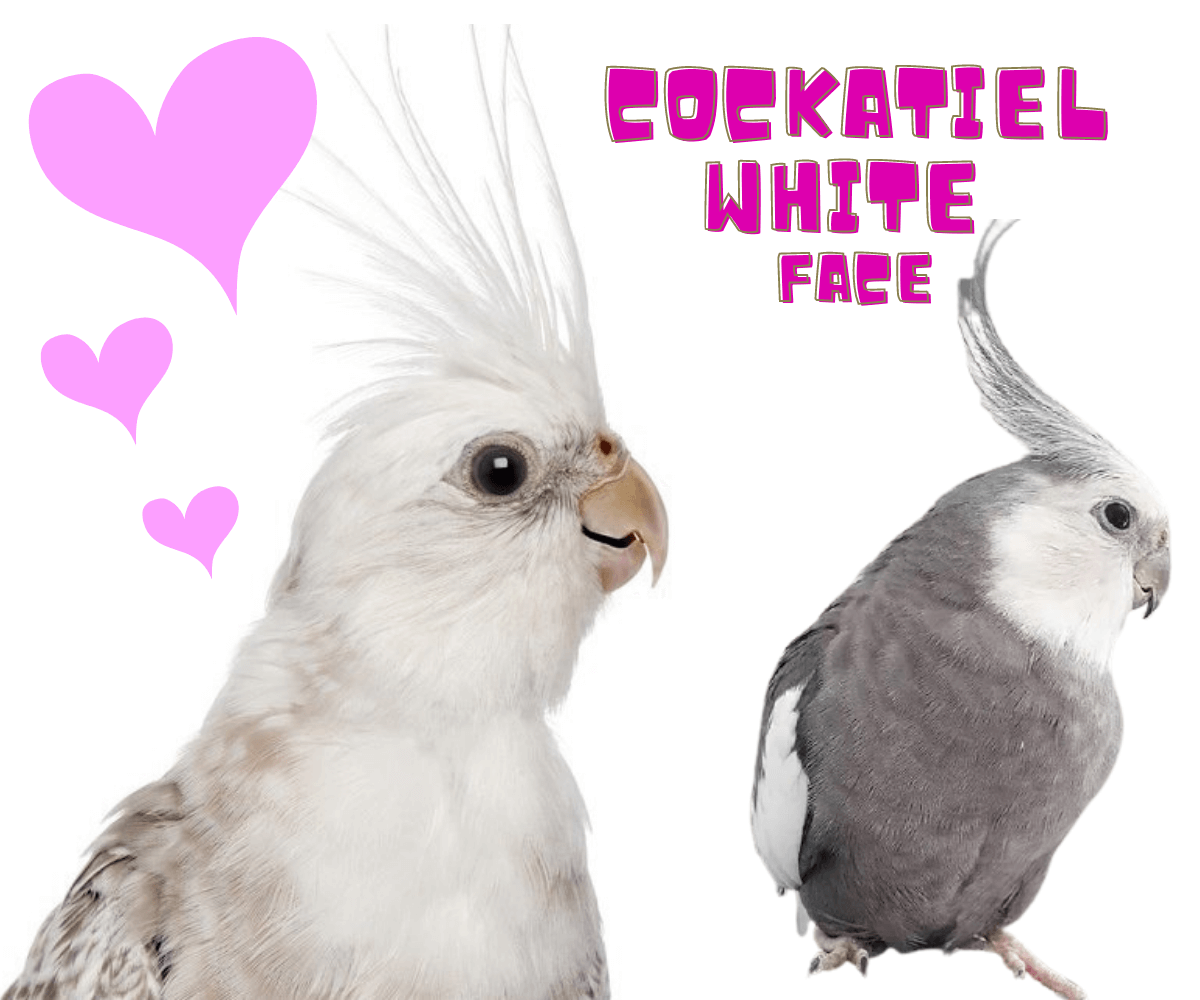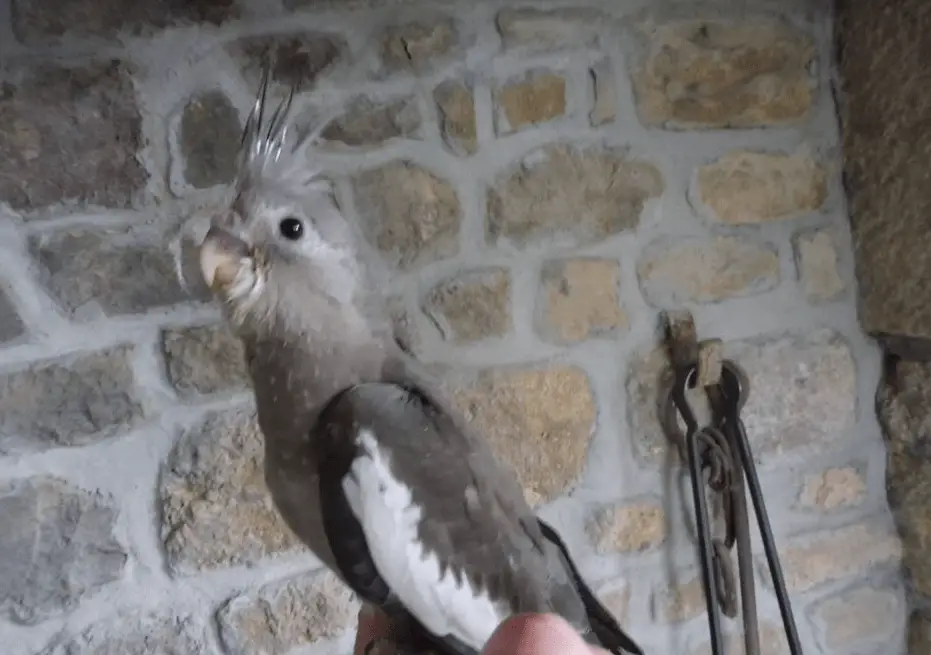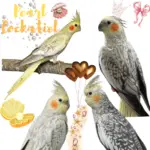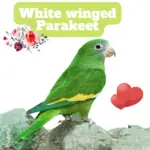
cockatiel white face/witeface lutino cockatiel
Cockatiel white face These birds retain their gray and white bodies like Yellowface and Gray, but they do not have yellow or orange-colored markings on their cheeks. Adult males have a white head, sometimes with gray markings. Females usually have a completely gray face.
Cockatiel white face
As with the wild type, young subjects of this mutation cannot be sexed from an early age. However, the white face is indeed a mutation. It is also appreciated by lovers of cockatiel mutations.
The young are born with beautiful white down and black eyes. This mutation removes all psittacins (yellow and red pigments). This, therefore, gives us a gray bird (more or less dark depending on its genetics and if added mutation). With white wing bands on the wings and no orange cheeks.
Here is a young female white face. In adulthood, his head will remain like this.

young white face cockatiel
In adulthood, the female does not have a white mask and the tail is streaked. The male has a solid tail and a white mask.
It is a so-called recessive mutation, which means that the two subjects must have this gene, either visually or in portage to have young white face on the brood. It appeared in the 1980s or so.
As we saw above, this mutation also combines with all the others and this does not change the sexing process.
white face cockatiel

cockatiel white
Cockatiel white face mutation
The captive Cockatiel parakeet has many color mutations that can also be combined with each other. This gives a very wide potential color palette.
While I generally prefer to breed wild type for my other species, I have to admit that in Cockatiel I love to play with genetics! This article is here to quickly introduce most mutations and put a picture on the one I have or had at home. The list is not exhaustive, it is very likely that a few are missing.
To find other color mutations, see the Cockatiel Colors page.
Mutations can be classified into three categories based on how they are inherited.
Recessive inheritance.
In this case, the transmission of the color mutation concerned is only expressed if the gene in which it is registered is carried by both chromosomes of the pair involved.
These are mutations:
-
White face
-
Pale face
-
Bronze Fallow
-
Ashy fallow
-
Plume
This mutation is called anti-sexual dimorphism. Indeed birds of this mutation cannot be sexed with the eye, the usual sexing characteristics such as the intensity of the mask of the face or the striated feathers under the tail can be found in males as well as in females. A DNA test is therefore necessary.
Below are the birds in Face Blanche mutation, on the left a male, on the right a Face Blanche variegated Opaline (we can see the beaded design on the wings).
Below are various variegated mutating birds.
Dominant inheritance.
In this case, the transmission of the color mutation concerned is expressed as soon as the gene in which it is registered is carried by at least one of the two chromosomes of the pair involved. We then speak of a single factor if the gene is carried by one chromosome, and of a double factor if the gene is carried by both chromosomes.
These are mutations:
-
Edged
-
Dominant yellow cheeks
In this case, the gene in which it is written is carried by the X sex chromosome. In birds, unlike humans, females are XY and males are XX. Suddenly, it is the father who transmits the mutation to his daughters.
These are mutations:
-
Cinnamon
-
Ino
-
Opaline
-
Orange cheeks
Cinamon With this mutation, black is replaced by brown / beige.
Ino. Corresponds to lutino on a wild base, or albino on a white face base, or cremino on a pale face base. Sexing ino birds is not necessarily easy because males and females are very similar (in lutino, females have orange cheeks like males).
We can still see streaks under the tail as well as white spots on the inside of the wings in females (and in young males who have not yet molted!). One trick is to take a flash photo of the underside of the tail, with the flash highlighting the streaks if they are present.
Opaline Note that this mutation creates a “beaded” design on the feathers of the wings and back disappears as the males moult (except in the males being also variegated, they generally keep their pearls).
Yellow cheeks.
Albino, Whiteface, and Silver cockatiels!
SOURCE:TielZone
White Face Mutation Standard
The crest is gray in color but there are some white tints at the root of the feathers implanted on the
forehead.
Head
The ear spot (mumps) is absent. It is accepted the presence of some white suffusions to
the location of the disappeared stain and/or its contours. The head is gray with varying inlays of
feathers of white color around the beak, on the forehead, the eye.
Neck, Back
All of these regions should be a uniform dark gray color. The color should be as dark as possible, do not
have no inlay or marbled effect.
Wings
All wing feathers (coverts and flight feathers) are uniformly dark gray in color except for one band
depigmented wing which borders the outside of part of the wing (when the latter is at rest). This band finds
its origin at the wing joint, runs along the wing at the fold-over 1.8 to 2 centimeters wide and ends on the
secondary flight feathers.
The elongated design of the wing band widens in its middle, without any indentation with the dark gray color of
the wing. The color should be pure white.
Chest, Belly, Panties, Underside
The chest is gray without a marbling effect. Belly, breeches, and undertail are gray with white markings. On
these regions, this gray and white marbled design must remain regular.
Rump, Sus-Caudales
The rump and upper tail are transversely streaked white and gray.
Tail
The upper side is streaked with white and gray for all feathers except the two outer rectrices streaked with
dark gray and white. The tip of the central caudals is gray-black.
The underside is streaked with light gray and white.
All these striations are symmetrical and oblique with respect to the axis of each feather
Paws, Fingers, and Nails
Legs and feet are gray. The nails are black.
Eyes
Dark gray.
Beak
Dark grey
White Faced Cockatiel Plays Basketball
SOURCE:ViralHog




















